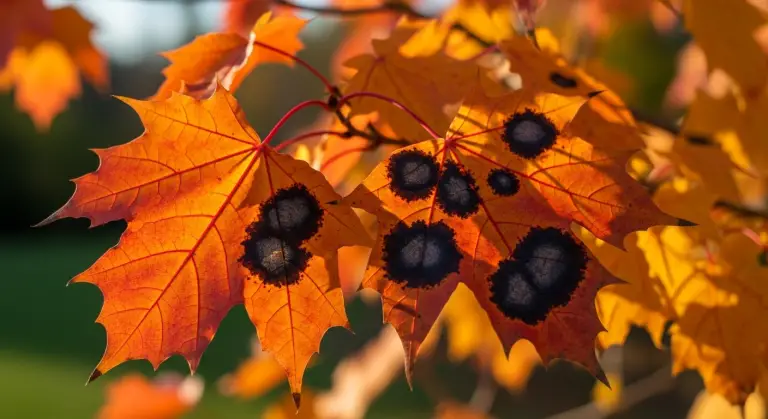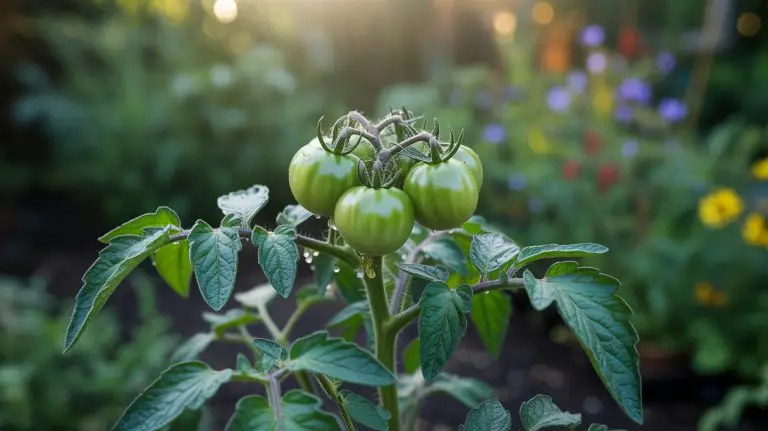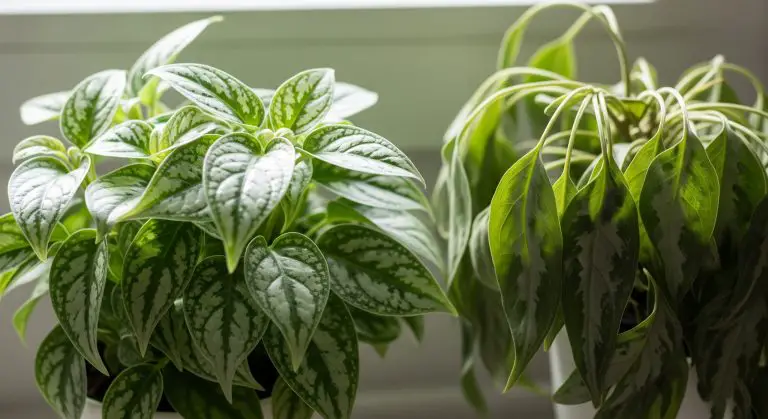How To Compost At Home For Gardening – A Beginner’S Guide
Do you ever look at your thriving (or maybe struggling!) garden and wish you had a secret weapon? Something to make your vegetables more vibrant, your flowers more dazzling, and your soil richer, all without spending a fortune on store-bought bags of fertilizer?
Now, look at your kitchen trash can. It’s likely filled with coffee grounds, vegetable peels, and eggshells. It feels like such a waste, doesn’t it? Well, I’m here to tell you that the solution to your garden dreams is sitting right there in what you might consider “waste.”
Imagine transforming those everyday scraps into a dark, crumbly, nutrient-packed superfood for your plants. This is the magic of composting. Learning how to compost at home for gardening is one of the most rewarding skills you can master. It’s simpler than you think, and the benefits are absolutely incredible.
In this complete guide, we’ll walk you through every step, from choosing your composter to harvesting that beautiful “black gold.” Let’s turn your kitchen scraps into garden success, together!
What's On the Page
- 1 Why Bother? The Amazing Benefits of How to Compost at Home for Gardening
- 2 Getting Started: Choosing Your Composting Method
- 3 The Perfect Recipe: What to Add to Your Compost Pile
- 4 Your Step-by-Step How to Compost at Home for Gardening Guide
- 5 How to Compost at Home for Gardening Care Guide: Best Practices
- 6 Troubleshooting: Common Problems with How to Compost at Home for Gardening
- 7 Frequently Asked Questions About Composting at Home
- 8 Your Journey to Black Gold Starts Now
Why Bother? The Amazing Benefits of How to Compost at Home for Gardening
Before we dive into the “how,” let’s talk about the “why.” Understanding the incredible benefits of how to compost at home for gardening will keep you motivated. This isn’t just about reducing trash; it’s about fundamentally improving your garden’s ecosystem.
Composting is a cornerstone of sustainable how to compost at home for gardening practices. Here’s what you stand to gain:
- Creates Nutrient-Rich Soil: Compost is packed with essential nutrients and beneficial microorganisms. Mixing it into your garden beds provides a slow-release fertilizer that feeds your plants naturally over time.
- Improves Soil Structure: Have heavy clay soil? Compost lightens it up, improving drainage. Have sandy soil that drains too quickly? Compost helps it retain moisture and nutrients. It’s a win-win!
- Saves You Money: You can significantly reduce or even eliminate the need to buy expensive fertilizers, soil conditioners, and potting mixes. Your wallet will thank you.
- Reduces Landfill Waste: Food scraps and yard trimmings make up a huge portion of household waste. Composting keeps this valuable organic matter out of landfills, where it would otherwise produce methane, a potent greenhouse gas. This is a simple, powerful step towards an eco-friendly how to compost at home for gardening lifestyle.
- Conserves Water: Healthy, compost-rich soil acts like a sponge, holding onto moisture for longer. This means you’ll need to water your garden less frequently, saving both time and water.
Getting Started: Choosing Your Composting Method
There isn’t one “right” way to compost. The best method for you depends on your space, your budget, and how much time you want to invest. Don’t worry—we’ll find the perfect fit for you!
The Classic Open Pile
This is the most basic method. If you have a decent amount of yard space, you can simply start a pile in a discreet corner. It’s free and easy to start, but can sometimes be a bit messy and may attract curious critters.
Best for: Gardeners with a larger yard and a good supply of both kitchen scraps and yard waste.
The Contained Compost Bin
This is the most popular choice for urban and suburban gardeners. Bins can be purchased or easily built from wood pallets or wire mesh. They keep things tidy, retain heat and moisture better than an open pile, and help deter pests.
Best for: Almost everyone! It’s a neat, efficient, and manageable system for most backyards.
The Tumbler System
Compost tumblers are sealed drums that are mounted on a frame, allowing you to turn the compost by rotating the entire container. This makes turning effortless and can speed up the composting process significantly. The trade-off is usually a smaller capacity and a higher initial cost.
Best for: Those who want faster results with less physical effort and have a smaller volume of scraps.
Vermicomposting (Worm Composting)
No yard? No problem! Vermicomposting uses a special bin and red wiggler worms to break down food scraps. It’s fast, odorless when done correctly, and can be kept indoors, on a balcony, or in a garage. The resulting “worm castings” are one of the most potent soil amendments you can find.
Best for: Apartment dwellers, small-space gardeners, or anyone who wants to compost kitchen scraps exclusively.
The Perfect Recipe: What to Add to Your Compost Pile
Think of your compost pile like a living lasagna. To get it cooking, you need to layer the right ingredients. The secret is balancing two types of materials: Greens and Browns.
The “Greens” (Nitrogen-Rich Materials)
These are the “wet” materials that provide nitrogen, which helps the microorganisms in your pile grow and multiply. They heat up the pile.
- Fruit and vegetable scraps
- Coffee grounds and paper filters
- Tea bags (remove the staple!)
- Fresh grass clippings
- Plant trimmings and old flowers
- Eggshells (crushed)
The “Browns” (Carbon-Rich Materials)
These are the “dry” materials that provide carbon, which is the food source for the microbes. They also provide aeration and prevent the pile from getting slimy and smelly.
- Dried leaves and pine needles
- Shredded cardboard (uncoated) and newspaper
- Twigs and small branches
- Sawdust (from untreated wood)
- Straw or hay
- Paper towel rolls and egg cartons
The Golden Ratio: Balancing Your Greens and Browns
The key to a happy, healthy compost pile is the ratio of browns to greens. A good rule of thumb is to aim for 2 to 3 parts Browns for every 1 part Greens by volume. Don’t stress about getting this perfect! It’s more of a guideline. If your pile is smelly and wet, add more browns. If it’s dry and inactive, add more greens.
What NEVER to Compost (And Why)
This is just as important as what to add. Putting the wrong things in your pile can lead to bad smells, pests, and unsafe compost. Avoid these at all costs:
- Meat, Fish, and Bones: These will rot, cause terrible odors, and attract pests like rodents and raccoons.
- Dairy Products and Grease: Same as above. No cheese, milk, butter, or oily foods.
- Pet Waste (Dogs & Cats): Their waste can contain harmful pathogens that you don’t want in your garden soil.
- Diseased or Insect-Infested Plants: You risk spreading those problems back into your garden.
- Weeds with Seeds: Unless you have a very hot compost pile, the seeds will likely survive and sprout in your garden beds.
- Chemically Treated Wood or Yard Waste: You don’t want pesticides or chemicals leaching into your finished compost.
Your Step-by-Step How to Compost at Home for Gardening Guide
Ready to get your hands dirty? Following this simple how to compost at home for gardening guide will set you up for success. It’s a forgiving process, so don’t be afraid to just start!
- Choose Your Spot: Pick a level, well-drained spot for your pile or bin. Some sun is fine, but a partially shaded area is often ideal to prevent it from drying out too quickly.
- Start with a Brown Layer: Begin your pile with a thick, 6-inch layer of “brown” materials like twigs, dried leaves, or shredded cardboard. This promotes good airflow from the bottom up.
- Add Your Greens: On top of your brown base, add a layer of “green” materials from your kitchen or yard. A good practice is to keep a lidded container in your kitchen for daily scraps.
- Layer It Up: Continue alternating between brown and green layers, like making a lasagna. Always try to finish with a layer of browns on top. This helps to seal in moisture and prevent odors and flies.
- Add a Little Water: Your compost pile should be as damp as a wrung-out sponge. If your materials are very dry, sprinkle a little water on each layer as you build it. If you get a lot of rain, you might need to cover your pile to prevent it from getting waterlogged.
- Turn Your Pile: This is the key to speeding things up! Turning your pile with a pitchfork or shovel mixes everything together and aerates it, which helps the microbes work their magic. Aim to turn it once every 1-2 weeks. If you have a tumbler, just give it a few spins!
- Be Patient and Harvest: In a few months to a year, the bottom of your pile will have transformed into dark, crumbly, sweet-smelling compost. It will look like rich soil, and you shouldn’t be able to identify the original materials. Sift it if you like, and spread it on your garden!
How to Compost at Home for Gardening Care Guide: Best Practices
Once your pile is established, a little maintenance goes a long way. This simple how to compost at home for gardening care guide covers the essential ongoing tasks. These are the how to compost at home for gardening best practices that separate good compost from great compost.
How Often Should I Turn My Compost?
For a hot, active pile, turning it once a week will yield the fastest results. For a more relaxed, “cold” composting approach, turning it once a month or even every few months is perfectly fine—it will just take longer to break down.
Is My Compost Too Wet or Too Dry?
The “wrung-out sponge” test is your best friend. Grab a handful of compost and squeeze. If a few drops of water come out, it’s perfect. If water gushes out, it’s too wet—add more browns and turn it. If it’s crumbly and dry, it’s too dry—add some greens or sprinkle with water and turn.
How Do I Know When It’s Ready?
Finished compost, or humus, has three key characteristics:
- Look: It will be dark brown or black and have a fine, crumbly texture.
- Smell: It should smell earthy and pleasant, like a forest floor after rain. It should not smell sour or like garbage.
- Feel: The original materials will be completely gone. You won’t recognize that banana peel or those leaves.
Troubleshooting: Common Problems with How to Compost at Home for Gardening
Even seasoned gardeners run into issues sometimes! Don’t be discouraged. Here are solutions to the most common problems with how to compost at home for gardening.
Problem: My compost pile smells like ammonia or rotting garbage!
Solution: This is the most common issue and almost always means your pile is too wet and has too many “green” materials. The fix is simple: add a generous layer of “browns” (shredded leaves, cardboard) and turn the pile thoroughly to introduce oxygen.
Problem: My pile isn’t heating up or breaking down.
Solution: Your pile is likely too dry, too small, or needs more “greens.” First, try adding water until it’s damp. If that doesn’t work, add a fresh layer of nitrogen-rich greens like grass clippings or kitchen scraps and turn it in. A pile needs to be at least 3x3x3 feet to generate significant heat.
Problem: I’m seeing ants, flies, or rodents.
Solution: Pests are usually a sign that you’re composting the wrong things or not managing the pile correctly. Make sure you are not adding any meat, dairy, or oily foods. Always bury fresh food scraps in the center of the pile and cover them with a layer of browns. Using a closed bin or tumbler can also solve this problem.
Frequently Asked Questions About Composting at Home
Can I compost during the winter?
Absolutely! The decomposition process will slow down significantly or even go dormant in freezing temperatures, but you can keep adding your kitchen scraps all winter long. Think of it as a savings account—once spring arrives and temperatures rise, the pile will thaw and become active again with a wealth of materials ready to break down.
How long does it take to get finished compost?
This varies greatly depending on your method and effort. A hot, well-managed pile that is turned weekly can produce compost in as little as 2-3 months. A more passive, cold pile might take 6 months to a year. A worm bin can process scraps in just a few weeks. The key is patience—it’s ready when it’s ready!
Is it okay to add coffee grounds and paper filters to my compost?
Yes, one hundred percent! Coffee grounds are a fantastic “green” material, rich in nitrogen. Worms especially love them. Unbleached paper filters can be tossed in as well; they count as a “brown” material.
What about acidic things like citrus peels and onions?
It is perfectly fine to add citrus peels, onion skins, and other acidic items to your home compost pile. In the grand scheme of a large, diverse pile, they won’t alter the final pH significantly. However, it’s good practice to add them in moderation and chop them up to help them break down faster.
Your Journey to Black Gold Starts Now
See? Learning how to compost at home for gardening isn’t some complex scientific process. It’s a simple, natural rhythm of layering, waiting, and turning. It’s about partnering with nature to create something incredibly valuable from things you used to throw away.
Embrace the process. Don’t worry about perfection. Your first batch of compost will feel like a true gardening triumph, and your plants will reward you with stronger growth and more abundant harvests. Here are a few final how to compost at home for gardening tips: chop up larger items to help them decompose faster, and always keep a pile of brown materials handy next to your bin.
So grab a bucket for your kitchen, find a little corner in your yard, and start your journey. You’re not just making soil; you’re making your garden more resilient, your home more sustainable, and your world a little bit greener. Happy composting!
- Tucson Organic Gardeners Planting Guide – Your Year-Round - July 27, 2025
- Sustainable Gardens – From Bare Soil To A Self-Sufficient - July 27, 2025
- Spinach Gardening Tips: Your Guide To Prevent Bolting & Get - July 27, 2025



